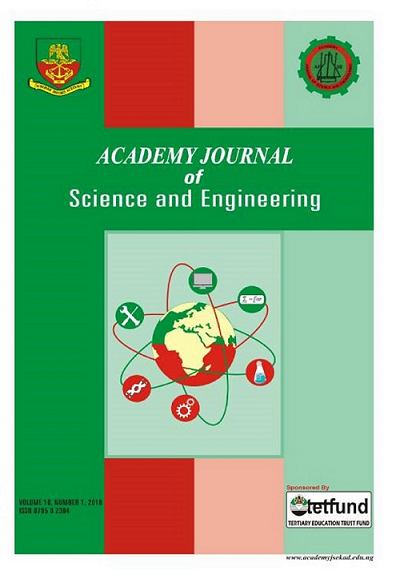EFFECT OF EMBEDDED BAR LENGTH ON THE PULL-OUT FORCE OF STEEL - CONCRETE BOND
Keywords:
Pull-out force, embedded length, compressive strength, strength relationship, workabilityAbstract
This paper investigated the effect of embedded bar length on the steel-concrete bond with a view to proposing a regression model to predict ultimate pull-out force. Concrete of mix proportion 1:2:4 (cement: sand: granite) was prepared using water-cement ratio of 0.5. Concrete cubes of sizes 150 mm were cast and cured in water for 7, 14, 21 and 28 days. Another set of concrete cubes of sizes 400 mm were cast and reinforcing steel bars were embedded up to 100, 200 and 300 mm depth at the centre of the cubes. Slump and compacting factor of the fresh concrete were determined, so also the compressive strength. The force required to pull out the bar from the concrete cube was measured at expiration of curing ages. The results showed that the concrete was of normal weight with 28-day compressive strength of 24.33 N/mm2. Pull-out tests showed that pull-out forces (initial and ultimate) increased with increase in embedded length of the bars, the pattern was that the initial pull-out force increases about 17 - 22% while the ultimate pull-out force increases by about 25-32% for every 100 mm increase in the bar length.
Downloads
Downloads
Published
Issue
Section
License

This work is licensed under a Creative Commons Attribution 4.0 International License.
This is an open-access journal which means that all content is freely available without charge to the user or his/her institution. Users are allowed to read, download, copy, distribute, print, search, or link to the full texts of the articles, or use them for any other lawful purpose, without asking prior permission from the publisher or the author.
The Authors own the copyright of the articles.



